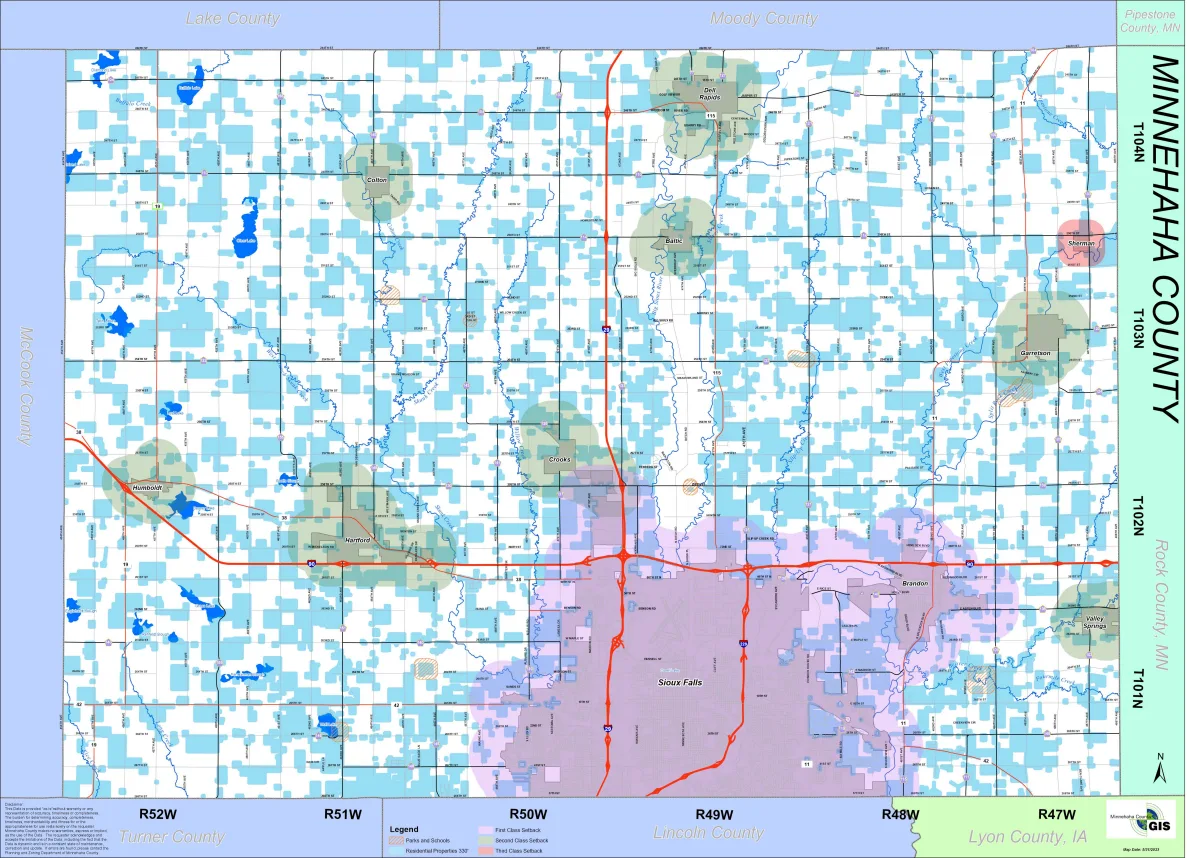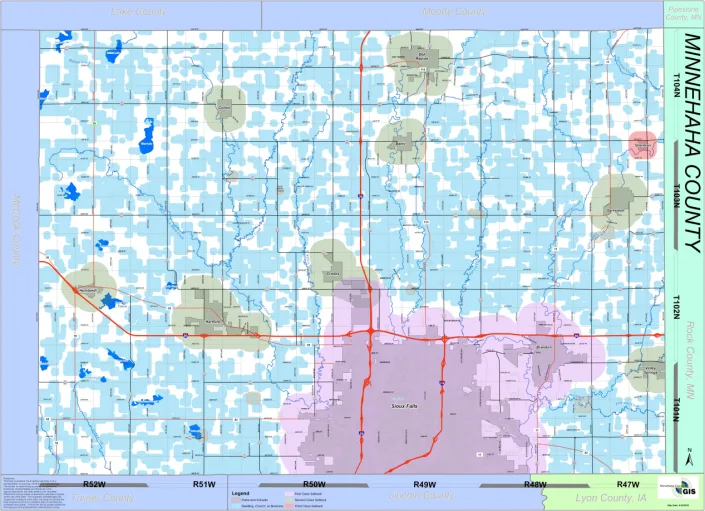
Residential Distance to CO2 Pipeline Sliced in New Minnehaha County Ordinance
After being delayed by two weeks, the Minnehaha County Commission passed an ordinance amendment on Tuesday to establish new regulations and processes for carbon dioxide, hazardous liquid and other types of transmission pipelines.
The ordinance, which passed on a final 4-1 vote, primarily brings controversial CO2 pipelines proposed by Summit Carbon Solutions and Navigator CO2 Ventures under county oversight.
Summit Carbon’s $4.5 billion Midwest Carbon Express pipeline is slated to run through about 477 miles of South Dakota land, while Navigator’s $3.2 billion Heartland Greenway project covers about 111.9 miles of land in the state’s southeastern counties.
The ordinance amendment outlines various setbacks on regulated pipelines in the county. The pipelines would also need to meet certain special use criteria for the county to allow their installation.
Alternatively, carbon companies would have to acquire conditional use permits to install their pipelines for an annual fee of $300 per linear mile of pipeline within the county.

A map showing various setback boundaries for carbon dioxide and other transmission pipelines in Minnehaha County. The blue areas indicate a 330-foot setback for residential homes, businesses and churches. The white space indicates where carbon companies could route their pipeline.
The now-adopted ordinance was not without compromise, however, as commissioners also voted 3-2 on an amendment to reduce the minimum setback distance for residential areas, churches and businesses from 750 feet to 330 feet from the centerline of the pipeline to the nearest point of the physical structure.
The final vote on the overall amendment was originally delayed by two weeks, because the May 23 vote on the setback amendment was split 2-2.
Commissioner Jen Bleyenberg, one of the two “no” votes on the setback amendment, argued the original 750-foot setback amendment would have incentivized CO2 companies “to work with landowners in a responsible manner.” She added the ordinance lays out other options if companies can’t come to an agreement with landowners,

A map showing various setback boundaries for carbon dioxide and other transmission pipelines in Minnehaha County. The blue areas indicate a 750-foot setback for residential areas, businesses and churches. The white space indicates where carbon companies could route their pipeline.
Bleyenberg also addressed the appearance of a map illustrating 750-foot boundaries across the county, saying that while it “looks pretty constrictive,” there’s more room for pipelines to route around the setbacks than meets the eye.
“I don’t think … our goal is to limit economic development in the county in the least, but I feel this ordinance really helps to channel the growth and the development in a way that we would want to see it go,” Bleyenberg said.
However, Commissioner Joe Kippley, who introduced the 330-foot setback amendment, said the original setback was too restrictive and would have essentially blocked pipelines from running through the entire county.
Kippley also argued an overly restrictive setback would undercut the commission’s limited authority on the matter and could hurt the commission’s ability to negotiate with carbon companies on present and future pipeline routing discussions.
“We’re not the safety police. We’re not the [South Dakota Public Utilities Commission],” Kippley said. “I think the county does have some legitimate routing authority, but it’s pretty well prescribed that I don’t think we can just pick a number out of a hat. 750, I think, is already getting to the point of too high.”
This article originally appeared on Sioux Falls Argus Leader: Minnehaha County passes new regulations for CO2 pipelines
